Waterworks Road WTW Microfiltration Project (2016)
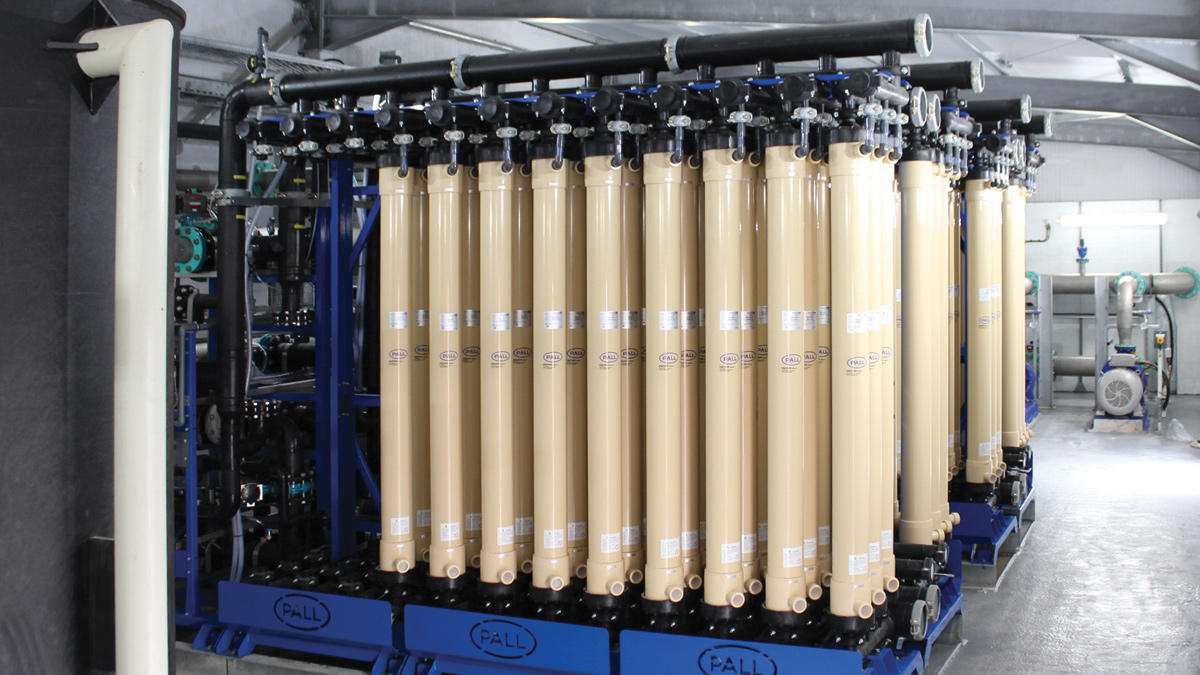
4 racks in a row - Courtesy of South East Water
Waterworks Road WTW is located within a 10 minute walk from Eastbourne town centre and the terminal train station. The water treatment works is located in an urban area, surrounded by a mixture of residential and light commercial properties. Raw water is abstracted from a single off site borehole which itself is fed by a series of adits, some of which run through the works itself. The works has been in production since the 1850s (the former Eastbourne Waterworks Co was incorporated by Act of Parliament in 1859, although records show that the Company did exist in the 1840s). The oldest source, Waterworks Road, originally ran at about 5.5Ml/d, then up to 9Ml/d in 1964 and currently has a 7.5Ml/d abstraction licence.
Existing works
The abstracted raw water is pumped to the treatment works where it is initially passed through four on site granulated activated carbon (GAC) filters. The water is chlorinated and then passed forward to Mill Gap No 2 Service Reservoir where it is de-chlorinated prior to entry into the reservoir itself. Mill Gap Reservoir also receives treated water from Meads Reservoir and supplies the surrounding network, which also includes the Eastbourne District Hospital.
With the raw water sourced from the surrounding chalk aquifer the works is susceptible to high turbidity spikes caused by fine chalk particulates which are most prevalent during and after times of heavy rainfall. In order to restrict the impact of turbidity and to maintain the desired water quality parameters the output of the works has been restricted to approximately 4.8Ml/d and as such the full output of the source has not been realised for a substantial period of time.
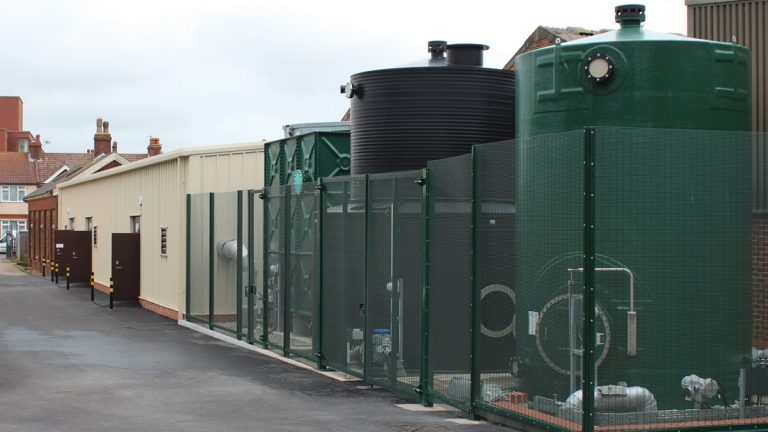
WTW building and external tanks – Courtesy of South East Water
AMP6 water quality schemes
Waterworks Road was identified by SEW as part of the PR14 business plan as one of three sites where additional treatment was required following deterioration of the bacteriological quality and increasing turbidity in the raw water. The Drinking Water Inspectorate (DWI) supported all three of the identified water quality schemes required in AMP6:
- Waterworks Road WTW which was required by 31 March 2016.
- Stockbury WTW which is required for deterioration of bacteriological quality and increasing turbidity in the raw water by 31 December 2016.
- Kingston WTW which is required to address increasing turbidity in the raw water by 31 March 2017.
Kingston WTW was documented in the 2017 edition of UK Water Projects.
The associated funding to deliver these projects was included in the AMP6 capital investment programme. With the required £3.6m funding being made available for year one of AMP6 it soon became clear that the delivery of this project within the timeframe from a standing start would be challenging.
This was made particularly evident when an early risk analysis identified that the project had some significant risks attached to it. So much so that it became apparent that in order to achieve the output a delivery team must be in placed with design commencing on the first working day of the 2015/16 financial year.
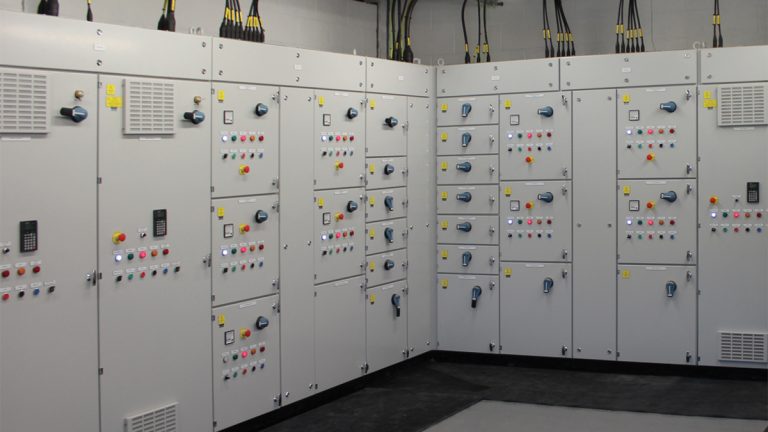
Motor control centre – Courtesy of South East Water
Design
In order to accommodate the microfiltration (MF) process, the works would have to be remodelled with the borehole pumps being replaced in order to adhere to the pressure constraints on the inlet to the MF modules. This in turn required the introduction of a new high lift pumping station, together with a surge vessel to deliver treated water to Mill Gap Reservoir. An ancillary tank was required for the MF backwash water, together with a separate tank for the chemical backwash neutralisation system.
To facilitate the early delivery of this project, a professional services contract (PSC) was issued to the above-ground framework contractor BamNomenca (a Bam Nuttall/nmcn PLC – now Galliford Try – joint venture) on 30 March 2015, who commenced design activities with a BIM laser scan on 1 April.
The PSC also allowed for early engagement with the supply chain, in particular the motor control centre (MCC) and MF suppliers. This enabled the building to be designed and planning permission to be submitted by 1 June (actual 28 May).
Risk mitigation
During this period a number of risk mitigation measures were put into place to ease the construction phase. With the building area being designed for approximately 230m2 it became increasingly difficult to locate the building in a position which would avoid buried services, disused buried tanks and the 32kv buried cable that ran through the site.
Locating the building was further complicated by the proximity of the main railway line which ran adjacent to one of the site fence lines. Due to this lack of available space it was decided to demolish a row of material storage sheds that ran alongside the opposite boundary which were being used to store some operational parts and materials on the site. Once these were demolished a building of 28m long x 8m wide x 5m high could be accommodated.
The acute lack of space on the site meant other areas had to be found for the site compound and lay down areas. Accommodation was negotiated with the next door disused dairy product distribution centre which provided space for five site offices and mess room facilities as well as car parking spaces for the site team and visitors. In addition to this, a working area around the off-site borehole was required in order to complete the borehole pump and headworks replacement.
This area which was owned by the neighbouring removal firm was in constant use as a parking area for the removal vans. Negotiations began with the removal firm which resulted in the boundary fence being taken down and a temporary parking area for the removal vans established, allowing a temporary working area to be created to enable the works to proceed. This arrangement was put into place at the beginning of January and lasted until the end of March 2016.
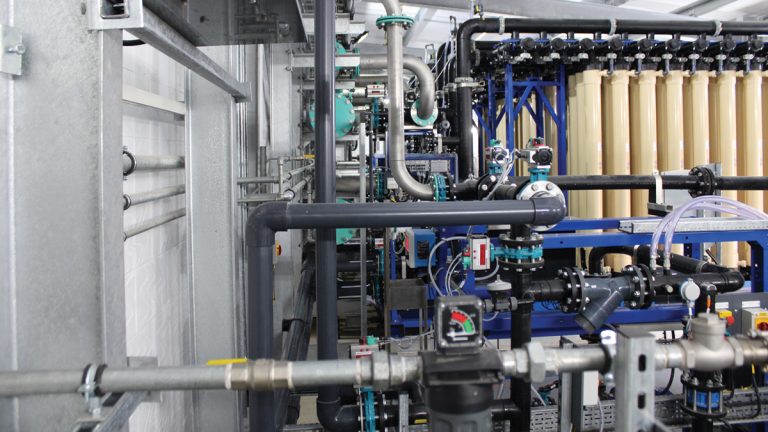
Backwashing rig – Courtesy of South East Water
Undertakings
Once planning was submitted, the team’s focus turned to making a construction contract award with Bam Nomenca in order to secure the procurement of the long delivery items such as the MCC and MF equipment which was already part designed but required firm orders to be placed.
These orders had to be confirmed by the end of July in order to meet the delivery dates. For the MCC this was 15 December (actual 16/12) and for the MF process from Pall Corporation on 18 December (actual 16/12).
Construction start
As soon as the construction contract was in place the site was mobilised and work began on the demolition of the material sheds ahead of planning being granted. This enabled the construction of the MF building to commence as soon as the planning outcome was known. The projected date for the planning determination was 28 July (actual 8/7) and the programme date for the commencement of construction was 1 August (actual 27/7).
Planned shutdown
Running in parallel with this, plans to have a winter shut down of the works were being made. This shutdown would allow a complete strip out of the existing electrical control and distribution system without the need to install any temporary arrangements which would otherwise be required to keep the works operational. This would be a major factor in achieving the output as the site team could be focused on completing the final works.
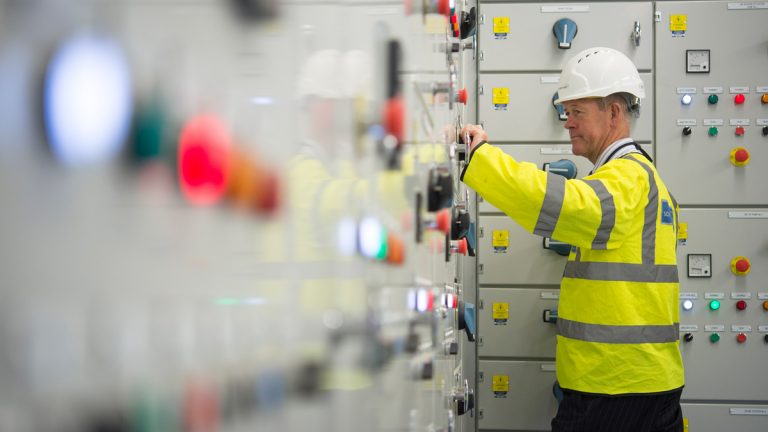
Photo by Ady Kerry, courtesy of South East Water
However with the main customer being the Eastbourne District Hospital additional operational measures were required in order to safeguard this supply to this customer. This included placing additional demand on other reservoirs in the network, ensuring additional spares for the Friston WTW to be available on site in case of need, as well as providing an additional conditional supply resource at Arlington WTW. The target date for this shutdown was 5 January 2016 (actual 6/1).
Significant involvement from the regional production and maintenance teams would be required in order to maintain supplies during this period and it is largely down to their efforts that the shutdown was maintained without resorting to the fall-back contingency position.
Renegotiating discharge consents
It soon became apparent early in the delivery of the project that the existing discharge consent to the sewer would have to be renegotiated to accommodate for the additional volume of MF backwash water. Discussions commenced with Southern Water early into the project, with the flow and volume parameters of the discharge consent becoming known in December.
Additionally, discharging from the works would only be allowable during Southern Water off peak periods. In order to accommodate these restrictions without creating additional demand on the operations an additional attenuation tank would be required, which was ordered on 5 January and was delivered and installed the week commencing 7 March.
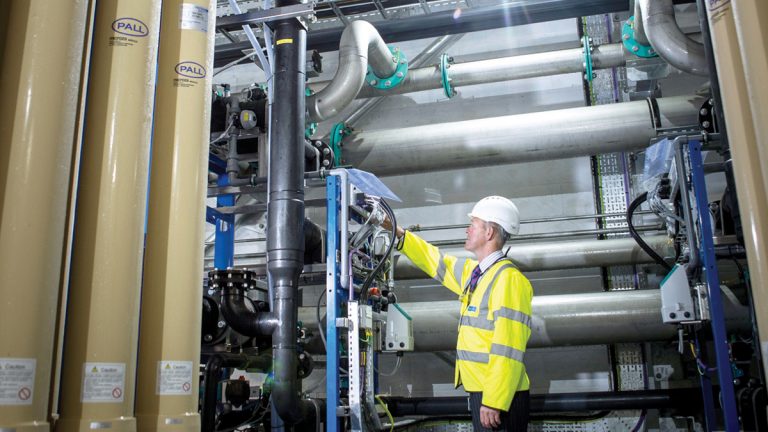
Inspecting the pneumatics – Photo by Ady Kerry, courtesy of SEW
M&E works
With this in place and with the building being watertight and secured by 9 December (target date was 27/11) and after the deliveries of the MCC and Pall MF being made by the due dates the M&E work commenced as planned on 5 January 2016.
During the shutdown, installation progressed at a rapid pace with the dry commissioning running concurrently with the installation in order maximise the time available. The full site acceptance testing (SAT) period commenced on 11 March with the disinfection and satisfactory bacteriological sampling result on the high lift pumping system and relift tank required by 17 March (actual 23/3).
At this stage the works was completed barring the surge vessel for the high lift pumping system which although programmed for 1 March was slightly behind its delivery schedule. This was finally installed on 23 March; however testing the vessel the next day identified a fault within the vessel, which required a return visit to correct after the early Easter break. This defect was corrected on 29 March after which the MF plant and associated equipment was made fully operational two days ahead of the DWI compliance date 31 March).
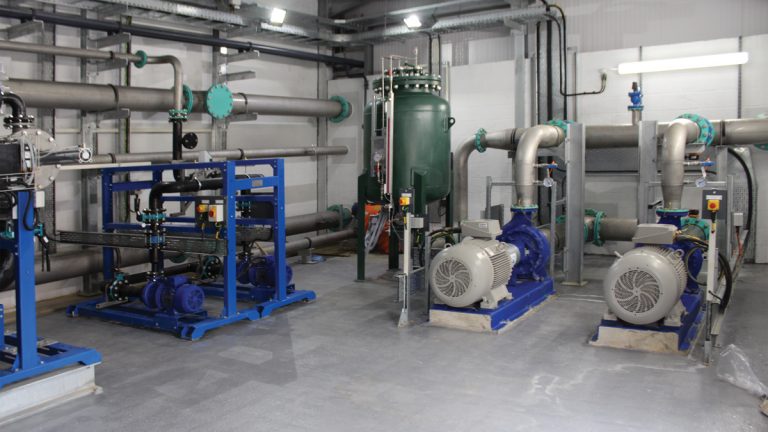
Relift pumps with surge vessel – Courtesy of South East Water
GAC filters
After the MF plant was made operational the team’s focus turned to completing the contract by addressing the operational issues on the GAC filters. The GAC valves and actuators, which were previously replaced by new, could now be commissioned which allowed the back washing of the GAC filters to be made automatic.
The site demobilised on 20 May (target date 27/5). At the time of writing the final documentation has been submitted and it is the expectation that the contract will be complete by the programme date of 31 May 2016.
Summary
The Waterworks Road MF project is the first of three water quality schemes to be delivered early in the AMP6 programme and was successfully delivered in accordance with the tight schedule and space constraints. This was made possible through working collaboratively with SEW’s delivery partner Bam Nomenca throughout the programmes, as well as working closely with the operations team to ensure that water supply to customers was maintained at all times.




